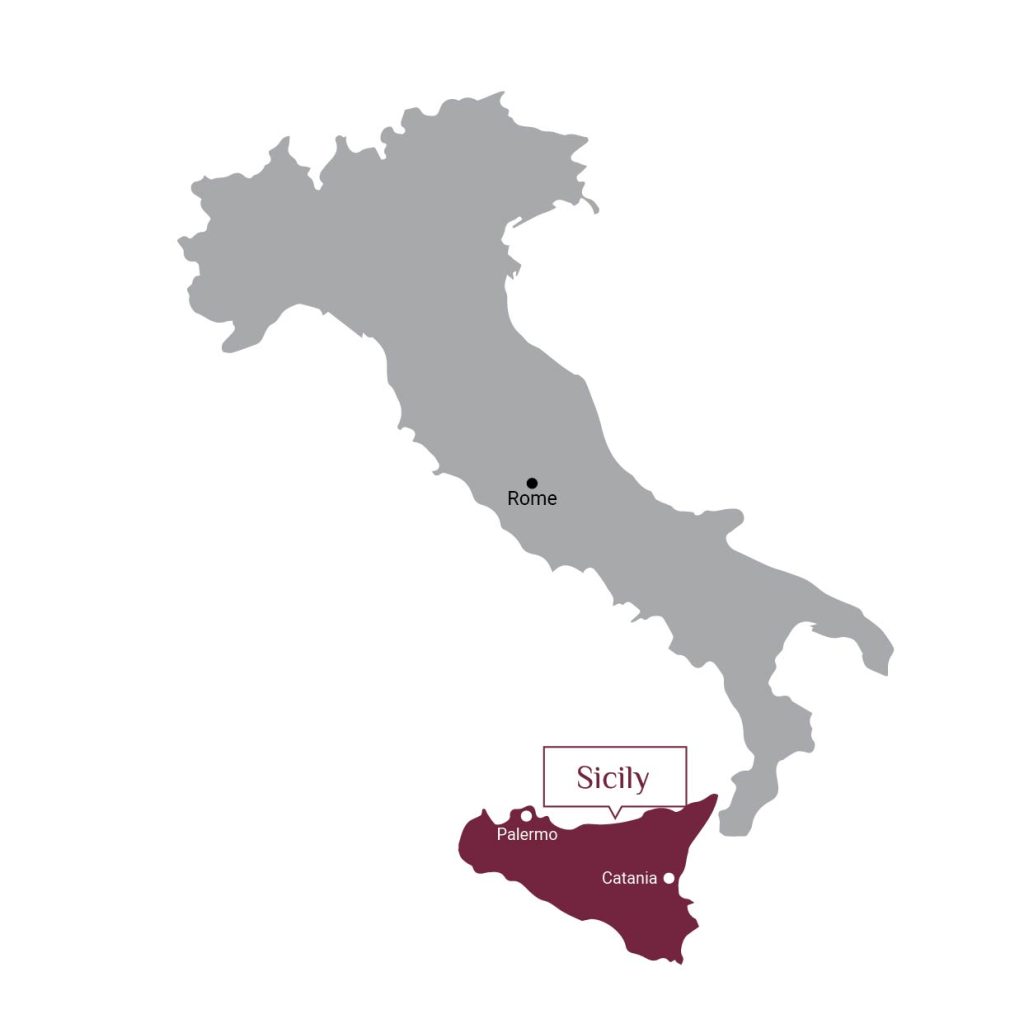Wine, Food, Culture
Food!
Sicily is a paradise for food and wine lovers. The local cuisine is rich in traditional dishes that have been passed down from generation to generation. Olive oil, tomatoes, eggplant, sardines, rice, pasta, capers, raisins, sweet wine, almonds, hot peppers, basil, anchovies, delicious sheep-milk cheeses, pine nuts, pistachio nuts, saffron and garlic result in many dishes that are at once salty, sweet and spicy. Sicily is famous for its arancini, rice balls filled with various ingredients;
pasta a la norma with olive oil, tomatoes, basil and salty ricotta salata; sfincione, a Sicilian deep dish cross between pizza and focaccia; pasta con le sarde, with sardines, saffron and fennel; caponata, a heady mix of tomatoes, eggplant, raisins, sweet vinegar, raisins and capers, delicious at room temperature by itself or spread on a thick slice of bread and panelle, delicious chickpea fritters. And, of course, there is abundant fresh fish of all kinds. Sicilian desserts and sweets are special and famous too. Cannoli, deep fried pastry filled with sweet ricotta cream and showered with chocolate bits or small candies; cassata, a rich ricotta cream piled on sponge cake with fruits and nuts – a traditional dish for Easter but enjoyed all year; Sicilian granita, from lemons and delicious marzipan from almonds and sugar.
Wine!
Sicilian wines amazing! There are at least 65 native grape varietals producing white, rose, red wines from light and delicate to rich and powerful. And there are legendary sweet wines too, Marsala and Passito from Pantelleria, a Sicilian island closer to Africa than to Europe.
The Grape Varieties
Nero d’Avola
This red grape is the most widely planted in Sicily. Nero d’Avola makes delicious rich wines which have a distinctive earthy bass note.
Nerelle Mascaleze
Grown in the volcanic soils around Mount Etna, this grape variety has become a favorite of sommeliers because of the elegance and linearity of its wines.
Catarratto
The most planted white variety in Sicily, Catarratto makes soft easy-to-drink wines and is often blended with other varieties.
Carricante
This white variety is often grown in the volcanic soils of Mount Etna and produces wines with sharp personality, fresh, vibrant and full of life.
The Wine Regions
There are more than 20 defined appellations in Sicily. Here are the most well-known.
Etna DOC
Mount Etna is the highest mountain in Italy outside of the Alps.
And it is an active volcano. The soils surrounding the mountain yield wines that have captured the attention of wine lovers worldwide.
Etna is Sicily’s most prestigious appellation (outside of the sweet wines of Marsala and Pantelleria).
Cerasuelo di Vittoria DOCG
Cerasuelo has earned the distinction of the DOCG designation meaning wines of the highest quality. The rival to the wines of Etna.
Marsala DOC
Marsala is an historic port town located on the western coast of Sicily, and also the wine region where Marsala wine is produced – a fortified wine that is especially famous as an ingredient in tiramisu and, of course, veal marsala! Marsala wines, like the
Sherry or Port, are very complex. There are dry wines, sweet wines in many grades, white wines, rose (ambra) and red wines from Marsala. Marsala is an incomparable companion to Sicily’s delicious salty cheeses.
Irresistible experiences are waiting for you in Sicily



